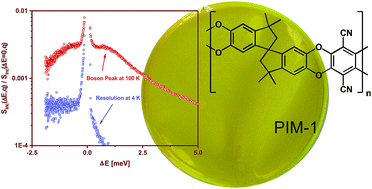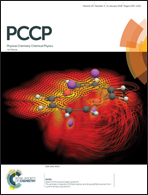Anomalies in the low frequency vibrational density of states for a polymer with intrinsic microporosity – the Boson peak of PIM-1†
Abstract
Polymers with intrinsic microporosity are promising candidates for the active separation layer in gas separation membranes. Here, the vibrational density of states (VDOS) for PIM-1, the prototypical polymer with intrinsic microporosity, is investigated by means of inelastic neutron scattering. The results are compared to data measured for a more conventional high-performance polyimide used in gas separation membranes (Matrimid). The measured data show the characteristic low frequency excess contribution to VDOS above the Debye sound wave level, generally known as the Boson peak in glass-forming materials. In comparison to the Boson peak of Matrimid, that of PIM-1 is shifted to lower frequencies. This shift is discussed considering the microporous, sponge-like structure of PIM-1 as providing a higher compressibility at the molecular scale than for conventional polymers. For an annealed PIM-1 sample, the Boson peak shifts to higher frequencies in comparison to the un-annealed sample. These changes in the VDOS of the annealed PIM-1 sample are related to changes in the microporous structure as confirmed by X-ray scattering.

- This article is part of the themed collection: 2018 PCCP HOT Articles


 Please wait while we load your content...
Please wait while we load your content...